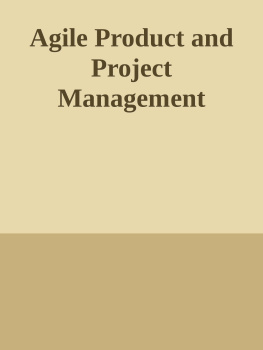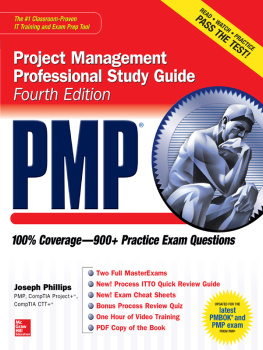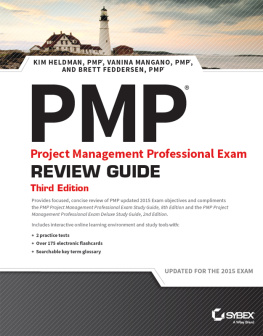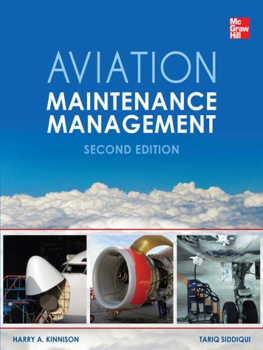Butterworth-Heinemann is an imprint of Elsevier Linacre House, Jordan Hill, Oxford OX2 8DP 30 Corporate Drive, Suite 400, Burlington, MA 01803
The right of Tom Lenahan to be identified as the author of this work has been asserted in accordance with the Copyright, Designs and Patents Act 1988
No part of this publication may be reproduced in any material form (including photocopying or storing in any medium by electronic means and whether or not transiently or incidentally to some other use of this publication) without the written permission of the copyright holder except in accordance with the provisions of the Copyright, Designs and Patents Act 1988 or under the terms of a licence issued by the Copyright Licensing Agency Ltd, 90 Tottenham Court Road, London, England W1T 4LP. Applications for the copyright holder's written permission to reproduce any part of this publication should be addressed to the publisher
Permissions may be sought directly from Elsevier's Science and Technology Rights Department in Oxford, UK: phone: (+44) (0) 1865 843830; fax: (+44) (0) 1865 853333; e-mail: by selecting Customer Support and then Obtaining Permissions
British Library Cataloguing in Publication Data, A catalogue record for this book is available from the British Library
Library of Congress Cataloguing in Publication Data, A catalogue record for this book is available from the Library of Congress
ISBN-13: 978-0-7506-6787-6 ISBN-10: 0-7506-6787-7
For information on all Butterworth-Heinemann publications visit our web site at http://books.elsevier.com
Printed and bound in the UK 06 07 08 09 10 10 9 8 7 6 5 4 3 2 1
Working together to grow libraries in developing countries www.elsevier.com/www.bookaid.org/www.sabre.org
To my wife Liz First, last and always, to my sons Julian and Craig our hope for the future, and to my grandsons Jay, Callum and Adam, the fulfilment of that hope
Preface
Tom Lenahan
Part one of this book describes the process of managing Turnarounds. It defines the rational, chronological steps, from initiation to termination. In the Preface to the earlier edition I wrote the following words about the book:
I am not arrogant enough nor yet naive enough to believe that it is definitive, but it is a start, a foundation, if you like, upon which others can build.
At the time I wrote them I didnt suspect how true those words were. I suspected even less how much I still had to learn about Turnarounds and the people who do them and I had no suspicion at all about how many of my assumptions I would have to overturn in order to make the paradigm shift from someone on the inside looking out (a Turnaround Manager working for one large company with a single approach to Turnarounds) to someone on the outside looking in (as a Turnaround Consultant working with many companies each with a different approach to Turnarounds and, equally important, a different operating context).
The root of my paradigm shift was the conversion from the belief that:
There is one right way to do Turnarounds,
to a much deeper level of understanding that:
There are basic principles that should be applied to effectively perform Turnarounds but the method of application will differ from company to company.
I am still learning. Almost six years after the earlier edition of this book was published, the quest for excellence goes on. Each time I am called upon to audit, train, coach or consult with a client I invariably learn something that allows me to further hone the focus of the model of excellence.
Another welcome change that has occurred since the earlier edition was published is that there are now others (specifically Joel Levitt and Michael V. Brown) who have contributed books to the field and increased the general understanding of how these complex enterprises are planned and managed. I salute them.
Finally looking to the future the work I have done over the last six years has led me to the conclusion that the next stage in the development of Turnaround methodology, the way forward if you like, will be the application of systems principles to Maintenance in general and Turnarounds in particular the exploration of the relationships between the various elements of Turnarounds to uncover the complexity, the interconnectivity and the resultant emergent properties that are generated. Only by understanding these can we truly understand Turnarounds.
Acknowledgements
This book is the culmination of a ten-year quest to distil basic principles out of the rich and varied practice of Turnaround management. Many people have, over the years, contributed concepts, insights and suggestions which have added to the sum of my own knowledge and served to clarify the central theme of this book, namely that Turnaround management is a rational, coherent, process.
Special thanks first to three people: to Professor Anthony Kelly, Central Queensland University (and Honorary Fellow, Manchester University School of Engineering), who saw enough merit in my work to suggest that it was worth publication, to Simon Smith, who contributed time, materials and the introduction to , and to my son and colleague Julian, who organized the material for the initial draft of the manuscript and added some insights of his own.
Many thanks also to John Harris, Manchester University School of Engineering, who edited the complete text of the earlier edition, to Jonathan Simpson of Butterworth-Heinemann, and to the following colleagues for their part in the quest:
Earlier edition
Barry Stirling of ABB
Eric Scott
Chris Greaves of ABB
Steve Waugh of ICI
John Billington of Tioxide
Ian Adams of Foster Wheeler
N. Sankara Narayanan of Hofincons India
Claire Gulliver of ICI Paints
New edition
The faculty and MSc students at Manchester University who tried out the Model of Excellence for me.
Part 1
The Process
Turnaround overview: context and strategy
Introduction
The Turnaround in a business context
It is perhaps an obvious statement to make that, given the complexity of the technology currently employed in the design and building of manufacturing plant, the limitations of the technology used to maintain it and the ever-increasing problem of its ageing, there will always be a need for maintenance work on the physical assets of the manufacturing activity. Furthermore, in an intensely competitive global market, characterized by increasing scales of production, the effective planning and management of that maintenance activity is coming to be seen as an ever more critical business process one which is capable of differentiating the excellent performers from those who are merely capable, and from those who are less than capable.
It is also the case that with large scale assets there will be maintenance work which can only be carried out when the plant has been taken off line, and made safe for the performance of such work (which includes, but is not limited to, critical inspection, equipment overhaul, repairs and plant modification).
The case for avoiding such interruptions to production, particularly in continuous processing plants, is well made by those responsible for production and for the profitability of the company. As a consequence, a more serious and focused effort has recently gone into the design of technologies capable of monitoring and maintaining plants on line, minimizing costly outages with all their attendant risks to safety, reliability, business and the environment.









